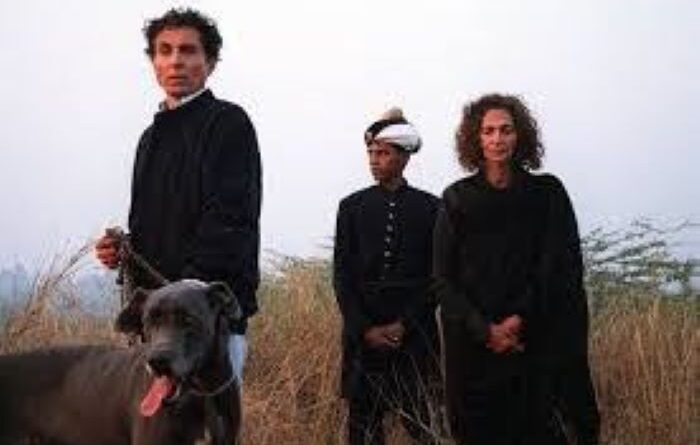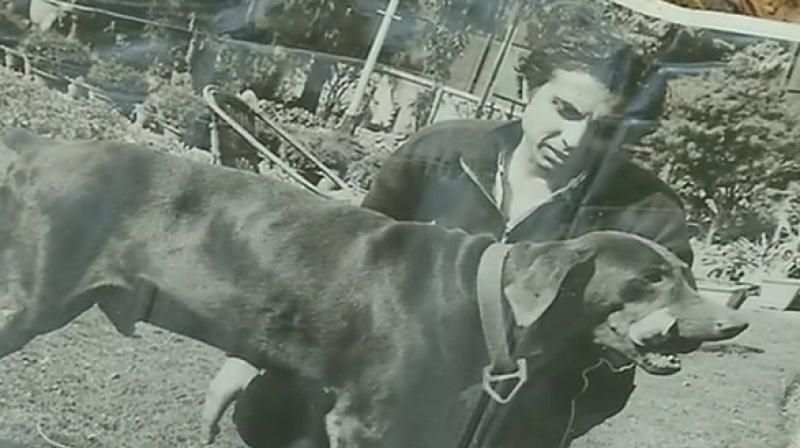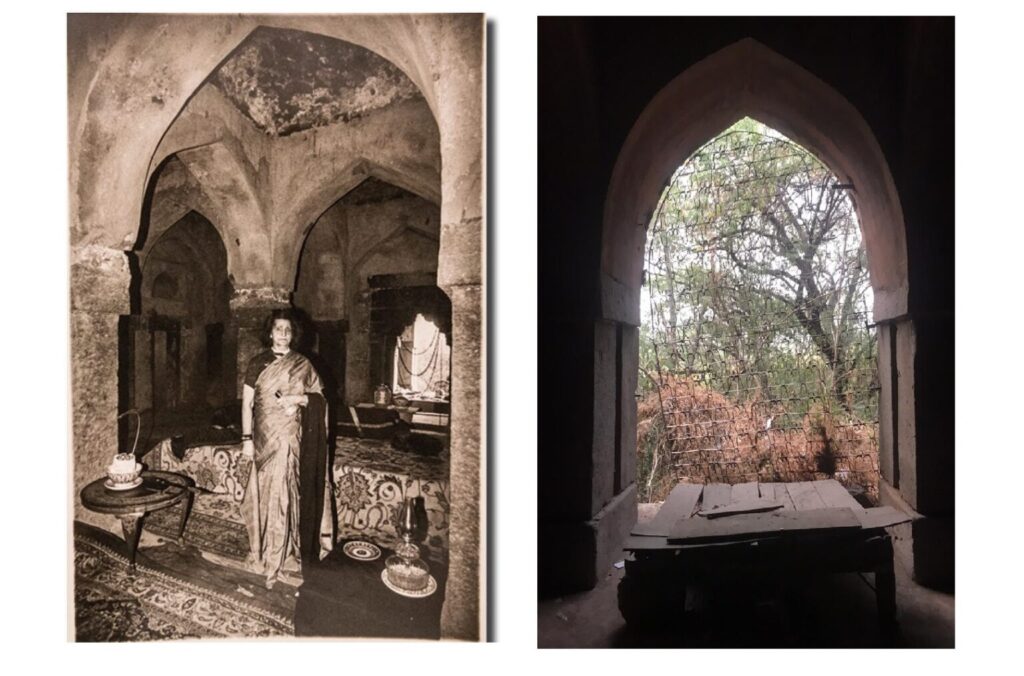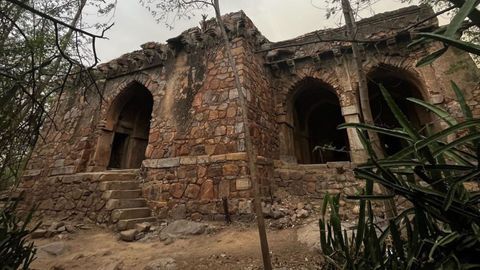Oudh (Awadh) UTTAR PRADESH / DELHI :

Ellen Barry of the New York Times walked into my study and, wasting no time, came straight to the point. What did I know about the last “Begum of Oudh”? She had a quizzical, amused look like she knew what the answer would be but would still like to see my expression. The abruptness of the query was her way to establish a point of departure on the theme.
After reading Ellen’s evocative masterpiece on the Oudh (Awadh) Royals in the NYT, I am chastising myself for poor judgment. I dismissed Ellen’s pursuit as a “foreigner’s” quest for the exotic. This was months ago. The story titled “The Jungle Prince of Delhi” appeared last week.
Only after reading the lengthy piece which, in parts, reads like a poem in prose, did I, Google Ellen, out. She had been the paper’s bureau chief in New Delhi, Moscow, winner of the Pulitzer Prize and so on.
The story of the “Begum”, Princess and the jungle Prince, is a classic case of “news” which, when neither confirmed nor denied, takes root in the popular imagination. Public opinion then drives the government into action to minimize criticism. That is why Indira Gandhi in the early 80s agreed to transfer the “Royals” to a medieval hunting lodge on the ridge. It is known as Malcha Mahal.

Ali Raza, Prince
In the early 70s, a woman with sharp aristocratic features took up residence on platform number one of New Delhi Railway station and proclaimed herself the last Begum of Oudh. For greater credibility, she had in her entourage, two children, a handsome dog, and a liveried servant.
The mainstream media took a perfunctory interest but the Urdu press amplified the fall of the House of Oudh and readers, in enclaves like Jama Masjid, saw it as part of a continuing story of victimhood. Here was tear-jerking melodrama: “our royals betrayed”.
It says something of our journalism that a story laden with so much possibility waited unexplored for 40 years until Ellen Barry appeared. She tied up all the loose ends – the railway station Lucknow, Bradford, Texas, Lahore: and what a story she has delivered, a story under our noses but which we failed to see. This is not surprising because even our archaeology was excavated by Europeans. Why, even the Last Moghul, is something of a masterpiece by William Dalrymple. While Dalrymple diligently scoured archives in the fashion of scholarly investigation, the Oudh story was there for all newspapers and channels to see.
True, the story was, on the face of it, “fake” from the beginning. But what shames us, this hack included, is the fact that it required an outsider to tell up why the “fake” was being played out – across the subcontinent and two generations?
Toba Tek Singh in Manto’s story cannot understand how a place, which was in India, can “go” to Pakistan. Like Toba Tek Singh, Begum Wilayat of Oudh also spent time in an asylum for her grand delusion. She had to live with women who were “tied in chains”, Ellen’s investigations reveal for the first time.
Trust Saiyyid Ammar Rizvi, Lucknow’s omnipresent Shia (and gourmet in the classical Awadh mould) to has become something of an intermediary between the Royals and the UP Chief Minister. He must surely know about the other Royal in that splendid city – Prince Moinuddin, who also addresses himself as Bahadur Shah III. The last Moghul Emperor was his great, great grandfather: that is his story. His great grandfather escaped to Kerala. But why did Bahadur Shah III materialize in Lucknow?

Malcha-Mahal-Wilayat-Mahal
The Bahadur Shah story has remained unnoticed because the claimant to the title never made a nuisance of himself. Begum Wilayat Mahal did. When the New Delhi station master requested her to vacate the platform, she threw a fit. She would commit suicide by drinking some exotic poison. In fact, when she did die in 1993, her progeny tutored by her for decades, put out the story that, for a decorative expiry, she had swallowed “crushed diamonds”. Her daughter, Sakina’s death was presumably caused by neglect because there were stories of her unwashed hair dropping in matted locks. It was with the “Prince”, variously named as Prince Ali Reza, or Cyrus, who spent his last years in Malcha Mahal, that Ellen struck an equation of tenderness mingled with curiosity. Google her NYT piece titled “The Jungle Prince of Delhi”.
The yarn begins in Lucknow where Wilayat was happily married to the registrar of Lucknow University, Inayatullah Butt. The name itself is a give-away: it is a Sunni name whereas anybody claiming lineage from the Nawabs of Oudh would have to be Shia. A similar story of dubious veracity explains why the Butt’s left for Pakistan. During the high tension of Partition in 1947, Hindus armed with hockey sticks beat Butt up. I can bet my last rupee that the story is false. Yes, there was small-scale stone-throwing between Shias and Sunnis on appointed days annually. But Hindu-Muslim violence? Never – until caste politics reared its head in the late 80s.
The last king of Oudh (Awadh), Wajid Ali Shah’s exile to Matia Burj near Kolkata or the more recent Partition of India are disorienting events for those in the thick of it, by historical memory or raw experience. In minds like Wilayat Butt’s historical memory and immediate experience are all jumbled up in knots.

Is Malcha Mahal Really Haunted ?
Ellen believes that disruptions caused by a change (Partition for instance) had a great deal to do with the Butt tragedy. A grievance “unaddressed, had metastasized” to become an epic tragedy.
Wilayat was a “mental” as one of her relatives in Lahore said. Ellen has explored the story backward after she got to know the recluse “Prince Cyrus” in his Malcha Marg hideout. In the end, he turned out to be no more than Micky Butt. She writes of their sad delusion:
“It is impossible to know, now that he and his sister are dead, whether they even knew it wasn’t all true.”
Curated and Compiled by Humra Kidwai
source: http://www.theindiaobserver.com / The India Observer / Home> Diaspora> Editorial> India> Interface> Lifestyle / by Saeed Naqvi / edited by Adam Rizvi / Curated and Compiled by Humra Kidwai / November 29th, 2019








